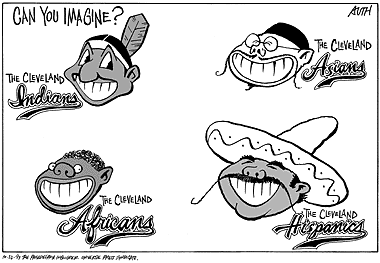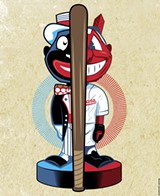Dear Pharrell: Please Think Before You Put On A Headdress
By Megan Red Shirt-Shaw
Symbols like the headdress are owned by the tribes. They are sacred to our communities. It is hurtful to see them used in any other way. Culture is alive and well in Native America. I invite you to Gathering of Nations, or to any powwow across the country so you can see the ways in which we continue to celebrate who we are as America’s first nations. Visit a reservation. Visit an urban Indian center. Come and see us for who we are and understand why we celebrate our traditions. You too, stylists of Elle. We see you. Clearly.
Pharrell, you have earned a lot of respect and celebration for your music. For being an individual. For changing the scene. In the Sioux community, we believe in the ideas of bravery, fortitude, generosity and wisdom. I see none of these ideas in your cover with Elle. I appreciate your apology but hope you know why that apology was important and that it wasn’t because your publicist told you to do so. I hope Elle UK follows your lead and apologizes.
You are a musician, not a warrior. You are a man of many accolades but so were the men of our community who sacrificed their lives for us to come. We have warriors in our communities in different ways now--in spiritual healers, in advocates, the men and women who serve in the United States military. I would hope that you would want to be a symbol for something other than ignorance. Your music has been uplifting across all cultures around the world--but there is nothing uplifting about your cover with Elle.
By Gyasi Ross
There are things that are still sacred in 2014. Simply because I'm 1) part black or 2) a hip-hopper, that does not give me the right to use the word "nigger/nigga"; that loaded and powerful word is one of those things that cannot be "commodified," as the brilliant bell hooks termed it. Black folks have paid for EXCLUSIVE ownership of that word over the course of centuries of oppression, recovery and then redemption. Headdresses are another one of those things. Native people utilize headdresses as one of our highest honors, reserved for those select few people who did something so valorous and special--oftentimes in battle, fighting off genocide--that we must identify them by putting pieces of the soaring eagle on their head.
It is reserved for those special individuals. Exclusively.
It's not simply a matter of being "Native" either. It's not that simple. MOST Natives will never earn the right to wear a headdress. It's not a racial thing, it's an experience thing, a "merit" thing. Similar to the way that I--almost one quarter black--don't have the right to say the word "nigger/nigga" simply by biology. I come from a people--the Blackfeet Nation-- who honor exceptional individuals with headdresses. Yet, I have never been given this honor. There's a strong possibility I never will be given this honor in the future either.
By Ginnie Graham
Some American Indian tribes have lost their language, art and other important forms of cultural identity. Some tribes are extinct.
Tribes in the few decades have made efforts to reclaim what has been lost, such as the Cherokee Nation’s language immersion programs and heritage educational museums.
This is the background on which celebrities, artists and designers are stomping onto when they appropriate American Indian items for their own use.
It’s viewed as more stealing of what is considered sacred to American Indians.
It's also considered a form of blackface, encouragement to perpetuate stereotypes and mockery.
Music fest-goers--take note.
By Brenna Ehrlich
1). What Does Wearing A Headdress Mean?
“The headdress is reserved for our revered elders who, through their selflessness and leadership, have earned the right to wear one. It’s a spiritual garb, not just cultural; it’s not merely an addition to one’s attire. Wearing one, even an imitation headdress, belittles what our elders have spent a lifetime to earn.” — Simon Moya-Smith, citizen of the Oglala Lakota Nation and journalist
2). Why Can’t I Wear A Headdress?
“As wearing a headdress reinforces stereotypes about Native people and appropriates our culture with little or no regard for our traditions, I think it is egregious and contributes to the dehumanization of our people.” — Jacqueline Keeler, founder of EONM (Eradicating Offensive Native Mascotry)
3). Can I Wear A Headdress If I’m Part-Native American, Like Pharrell?
“First of all, if he is part-Native American—which he very well may be—well maybe then he should know better than to put a war bonnet on. Just because you are part-Native American doesn’t mean you can put a war bonnet on. What do you do for Native Americans? What parts of the culture are you involved in? If the best you could do is say, ‘I am Native American and I can put a war bonnet on,’ that is pretty sad.” — Cliff Matias, Director of Redhawk Native American Arts Council
"Part Native" is no excuse
The last excuse--that people who are part Native can do whatever they want--comes up often. If it isn't a celebrities themselves--Jessica Simpson, Miley Cyrus, or Kourtney Kardashian--it's their fans making excuses for them. That's the only feeble justification people can come up for Johnny Depp playing Tonto or Cher wearing a headdress.
Some of Pharrell's fans used that excuse too. In an editorial, Indian Country Today swatted it down:
Oh, Pharrell Is Part Native American? Here's Why It Doesn't Matter
"The young man whose name is derivative of his father’s (Pharaoh) and who says he has Native American and Egyptian heritages..."
Bloggers, Facebook pundits and even journalists are speculating that this claim may dull the outrage over the image—but does it work that way? Does some American Indian DNA in Pharrell's double helix make the headdress fashion choice OK? In a word, no. Here are four reasons why:
1. Not All Indians Wear Feather Headdresses
While the feather, specifically an eagle feather, is a sacred symbol in many Native American cultures, the "war bonnet" style headdress Pharrell is wearing is very specific to Plains tribes. An article at native-languages.org cites the figure of 12 tribes; this is a very small number considering that there are 566 federally recognized tribes and innumerable others that either aren't federally recognized or simply gone due to assimilation or genocide. Some of the feather-headdress-wearing tribes are large and well-known—the Lakota, the Crow, the Cheyenne—but saying that all Indians wear feather headdresses is—to use a very superficial example—like saying all Europeans wear lederhosen.
For the sake of argument, say some of the above points didn't hold up. Say, perhaps, Pharrell's Native ancestor was from a Plains tribe that wore feather headdresses, and that he had studied the culture and it informed his daily life, and he had been given the feathers for accomplishments. The headdress remains a sacred ceremonial item, to be worn on special occasions. There's no tribute in wearing the headdress on the cover of Elle UK, flanked by "The Secret Life of Keira Knightley" and "All Natural Hair: 23 Products to Try Now." This is a spiritual item; on the cover of Elle UK it becomes secularized, trivialized, accessorized. Those who hold the headdress sacred might well say this is the opposite of a tribute.
Some people objected to the following cartoon, claiming it was racist and saying you can't fight racism with racism.

I liked it for the same reasons I like these:


They all make the same point. Used stereotypically, the Indian headdress is no different from a Mexican sombrero or a Chinese coolie hat. Or a Zulu warrior's outfit from the same 19th-century era. They all serve to stereotype minorities as primitive peasants or savages, not modern people.
Pharrell wouldn't dress as an African savage, so why is he dressing as an Indian savage? The wrongness of his actions should be self-evident.
For more on the subject, see Pharrell Apologizes for Headdress and Pharrell in a Headdress.

No comments:
Post a Comment